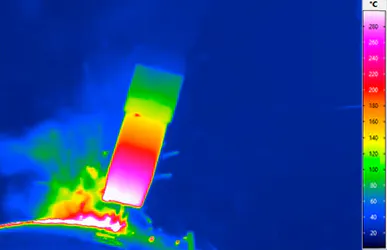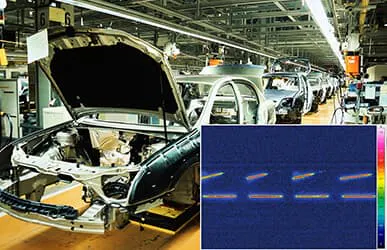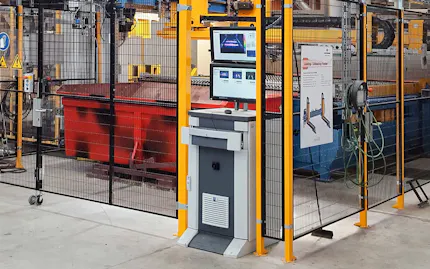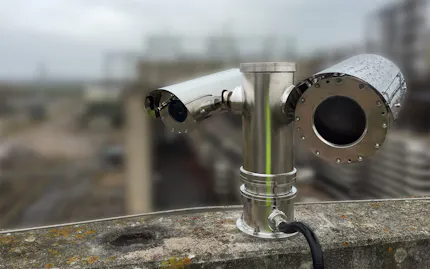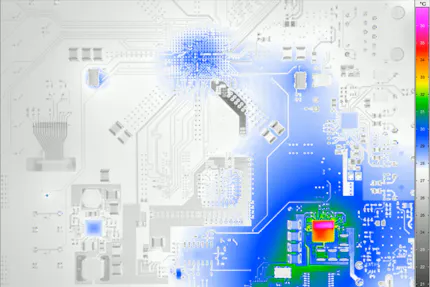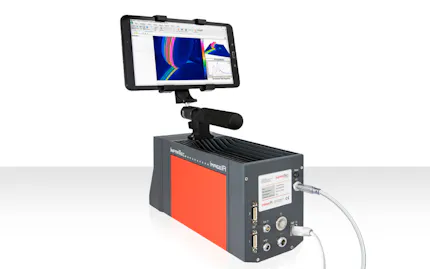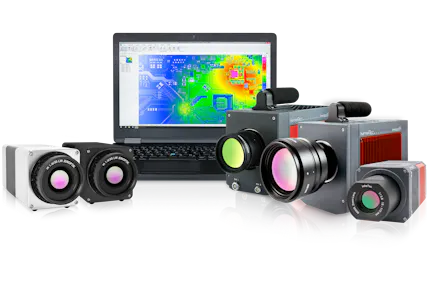Long-range Thermal Zoom Cameras
Using thermal cameras for security applications has become a very common and useful asset for border protection and facility monitoring. The advantages are obvious: Thermal cameras do not depend on light conditions, they provide constant imaging any time a day, can penetrate haze and fog. Even camouflaged persons or vehicles can be detected when entering areas to be considered as off-limits for intruders. Depending on the camera configuration chosen it may be possible to detect humans beyond 15 km distance, ground vehicles or small boats beyond 20 km, larger ships or vessels and aircraft beyond 30 km.
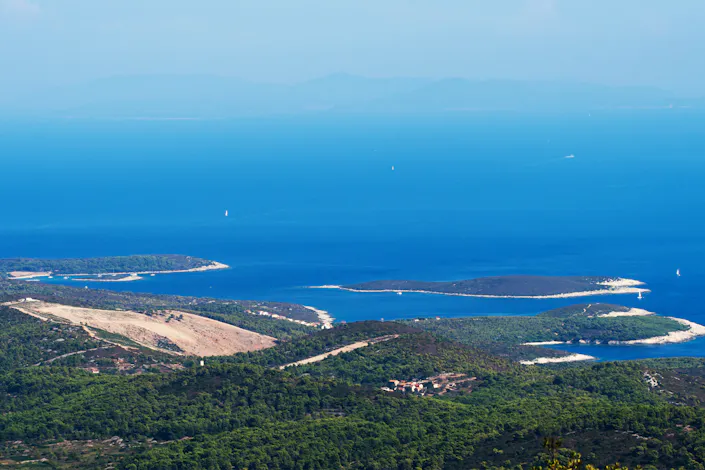
But there is more than sheer range performance when you introduce thermal zoom cameras to monitoring tasks:
The cameras´ temperature sensing capabilities also offer the chance to get some tactical information about physical conditions of the remote target – the thermal map or signature indicates the usage of motors. It also allows discriminating passive from active vehicles.
The bigger the zoom range of the chose camera, the more options are created for applications at medium up to short distances. If a monitoring outpost is planned to be operated autonomously or remotely this adds self-protection capability as well.
Zoom flexibility also creates a chance to monitor more than one target at a time, then concentrating on the more interesting intruder.
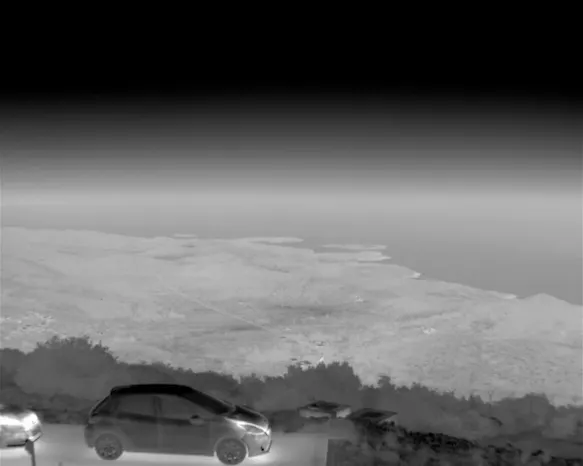
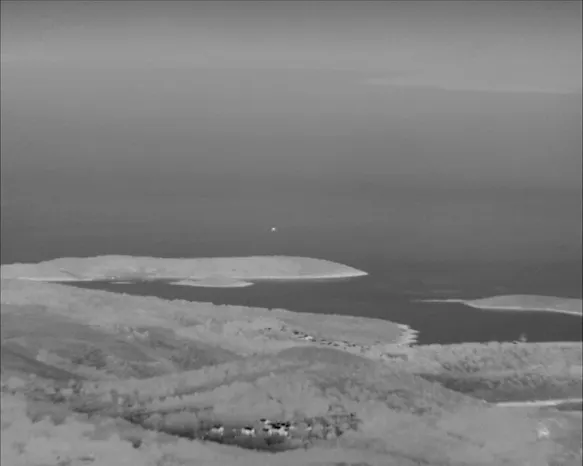

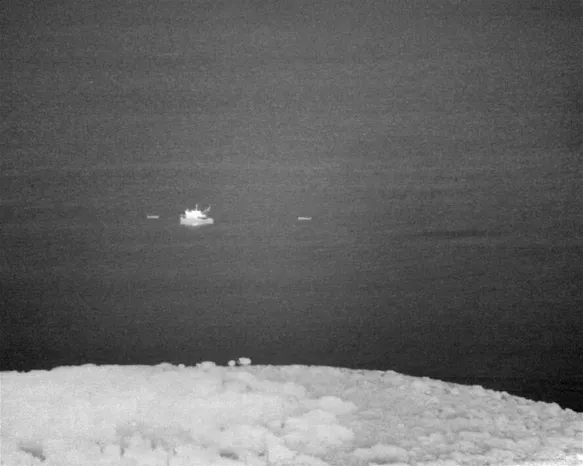
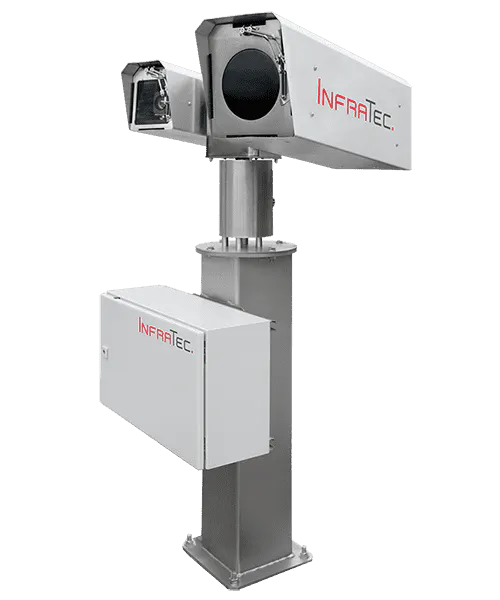
Requirements Besides a Modern Thermal Camera
Of course a complete monitoring system needs more than a camera:
High-resolution and sturdy pan-tilt heads are a must for exact pointing and stable images under any weather conditions. Needless to say that stations that shall overlook large areas are exposed to wind, moisture and dust on a higher level than small short-range solutions attached to buildings or protected fixtures. So the pan-tilt needs to be both precise and ruggedized.
Mating the thermal camera with an equally powerful digital zoom color video camera creates a solution that offers a cost-efficient add-on for additional information like reading of remote letterings.
A powerful software package can combine complete camera control with a video management system, depending on the user´s requirement profile anything should be possible between real-time human-based monitoring up to a fully autonomous operation.
Adding features like a laser range finder, GPS, mapping software, radar, image stabilization can turn a pure monitoring system into a surveillance workhorse with even more information for the user.
Unlimited Flexibility in Thermal Imaging with Zoom
Motorized zoom lenses in general
Radiometric zoom lens specialties
Specific motorized zoom camera advantages
Applications for infrared zoom cameras in detail


InfraTec´s contribution to the above tasks is the development of thermal HD cameras – cooled and uncooled. Their key specifications are:
ImageIR® 6300 Z
Cooled focal plane array photon detector operating in snapshot mode with (640 × 512) IR pixels
Standard built-in 7.5x zoom lens with motor focus
Zoom infrared camera series ImageIR® 6300 Z
ImageIR® 8300 Z
Cooled 640 x 512 IR pixel detector with a (28 … 850) mm lens
Field of view: (19.8 × 15.9)° ... (0.6 × 0.5)°
Super-zoom infrared camera series ImageIR® 8300 Z
ImageIR® 9300 Z
Cooled 640 x 512 IR pixel detector with a (28 … 850) mm lens
Field of view: (39.8 × 32.3)° ... (1.3 × 1.0)°
Super-Zoom Infrared Camera Series ImageIR® 9300 Z
VarioCAM® HD Z
Uncooled 1,024 x 768 IR pixel microbolometer detector with a (25 … 150) mm lens
Horizontal field of view: (41.5° @ 25 mm … 6.6° @ 150 mm)
Infrared camera series VarioCAM® HD Z security
Complete solutions from InfraTec are always based on the IROD infrared monitoring software. In addition, InfraTec cameras can be incorporated into the systems of external partners. This extends the possibilty to integrate ITAR-free thermal imaging cameras into various static platforms, ground vehicles, aircraft or ships.
Coastal Protection in the Adriatic Sea
Below pictures illustrate the efficiency of an ImageIR® 9300 Z. Located on an Adriatic radar tower it allows near-field imaging for self-protection, mid-range surveillance of the area adjacent to the tower and remote monitoring of ships near to the coast line. The distance range covers some 25 m to beyond 11 km and even the seaspace to a neighbour island more than 40 km away.
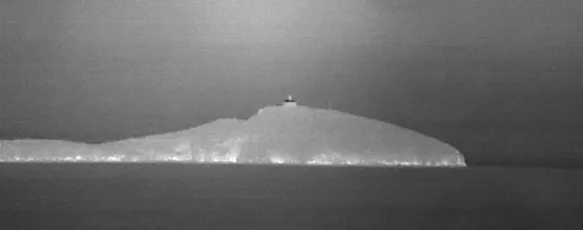

Would You Like to Know More?
It is not unusual for tasks to be associated with special requirements. Discuss your specific application needs with our specialists, receive further technical information or learn more about our additional services.
Send request
